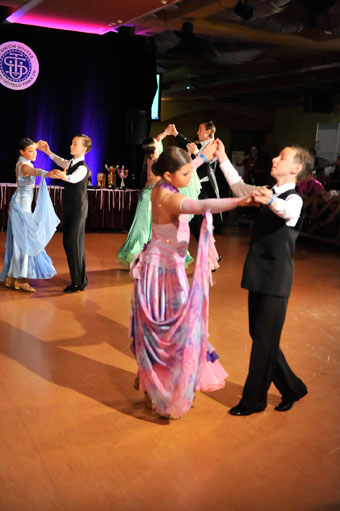Tips for the teacher.
In order to make it easier to understand how the system works, I will give you three very easy figures in Slow Waltz to develop the different disciplines by just using these three figures….
We will use three figures that do not exist in the “normal” International syllabus to make it very clear that in the free style it is possible to use any figure that is considered to be in harmony with the music and in character with the dance.
Natural turn Free style.
Starting position, Man Facing the LOD.
LF diag. back, (a type of balance step with a slight oversway action) count 1,2,3. RF forward, LF to side, close RF to LF backing LOD having turned ½ a turn to right counting 4,5,6.
Repeat the same figure making another ½ turn to the right to finish in the starting position. The lady dances normal opposite. The Natural Turn can then be repeated.
Quarter turn Free style.
Starting position, Man Facing the LOD.
LF diag. back (a type of balance step with a slight oversway action) count 1,2,3. RF forward, LF to side close RF to LF backing Diag Centre having turned ¾ to the right counting 4,5,6.
Dance three steps back, L, R, L, counting 4,5,6 leading lady outside on 6. RF back, LF to side, close RF to LF having turned ¾ of a turn back to the L counting 7,8,9, finishing in the starting position again. Lady is dancing the normal opposite stepping outside man on his R side on step 6.
Reverse turn Free style
Starting position, Man facing the LOD.
LF forward, turning to the L, RF to side, LF back leading lady to step outside on man’s R side having turned ½ a turn to L. Dance RF back continue turning to the L, Place LF to the side and close RF to LF. If follow with a Balance step to dance Natural turn or Quarter turn Finish Facing Diag. wall. If repeating the Reverse turn continue turn to L a further 1/8 to finish in the Starting position facing the LOD.
Note: Each figure can be repeated. A good combination is to dance Quarter turn, Reverse turn alternatively. Another good combination for beginners is to dance the Natural turn and the Quarter turn alternatively. It is possible to dance Natural turn, Reverse turn alternatively as well but then put in two balance step before the Reverse turn. One balance step on LF and one Balance step on RF counting 1,2,3,4,5,6.
This way of teaching the Slow Waltz to beginners are much easier than the “normal” established way to teach Slow Waltz with the Change steps mainly because each figure can be repeated and they are all compatible with each other. Also the man finds it much easier to lead the lady because he may dance the figures in any order.
How to develope the three figures into Solo dance, Duo dance and One dance competitions.
Solo Dance Male Slow Waltz
By dancing the man’s step alone he can compete in the Solo dance discipline. Just remember not to hold the arms in a fixed position but to add arm movements that will underline the figures. We use the organiser’s music with several dancers on the floor.
Solo Dance Female Slow Waltz
By dancing the lady’s step alone she can compete in the Solo dance discipline. Just remember not to hold the arms in a fixed position but to add arm movements that will underline the figures. We use the organiser’s music with several dancers on the floor.
Duo Dance Slow Waltz
By dancing in shadow position and both dancing the same steps synchronised they can compete in the Duo Dance Slow Waltz discipline. The lady could dance the men’s steps together with the man or the man could dance the lady’s steps together with the lady. Two men or two Ladies can dance together as well. It is also possible to change steps from man’s steps to the lady’s steps while dancing. We use the organiser’s music with several duos on the floor at the same time. The main part of the performance would be danced in a synchronised mode, side by side or in shadow.
One Dance Slow Waltz
By dancing as a couple in a normal hold and dancing the figures in the “normal way” the couple can compete in the One Dance competition Slow Waltz. As this is free style it is possible to release hold in the One Dance competition to create nice arm lines together without having to stay in the fixed close hold position. We use the organiser’s music with several couples on the floor. The main part of the performance would be danced in the “normal hold”.
As you can appreciate more figures need to be danced in a similar way in order to make a successful performance on the competition floor. However, by using only two or three very easy figures it is easy to understand how the system works, easy figures can also look very interesting and beautiful with the right arm movements, danced solo or in synchronised mode side by side.
Of course it is possible to pick any dance and teach two or three easy figures and develop the different disciplines in a similar way as with the Slow Waltz. Popular dances that could be used for Solo and One dance and Duo dance competitions are all 10 Ballroom and Latin dances, the three Caribbean dances and some special couple dances like Argentine Tango.
Good luck with the teaching!
N-H


